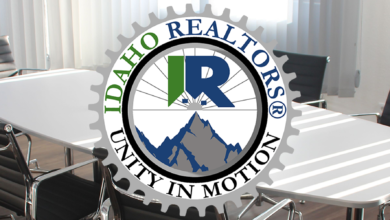Local Government Affairs Committees

Congratulations! Whether you are starting a government affairs committee or strengthening existing efforts, you are taking significant steps towards being a trusted and influential voice on all things real estate in your community. The fact is there is no offseason in politics. Policies that impact our industry and the people we serve are being developed every day at the city, county, state and national level. Having an effective government affairs committee will empower your association to help meaningfully shape those policies.
TIP Advocacy is an immutable part of government affairs. Advocacy is a process. Successful advocacy is a long-term process.
Contents
- Basics and Necessities
- Next Steps
- Develop an Action Plan
- Advocacy in Action
- Building a Grassroots Network
- Resources
Basics and Necessities
Put simply, government affairs is the process of establishing and maintaining relationships with public
officials and staff to positively influence the public decisions of legislative (i.e. city councils, county
commissions, state legislatures) or regulatory bodies (city building department, planning and zoning,
municipal agencies, state or federal agencies) for your members, clients and communities.
Getting Started
- Establish a government affairs committee. The mission and scope of the committee must be established up front. The committee should be responsible for:
- Creating and executing a government affairs strategy to support the mission and goals
of your association. This should include a mission statement for the committee, priority
list of political issues facing your association and realistic goals you hope to achieve
politically at the local level; - Identifying and providing advice to association leadership on opportunities (and risk)
stemming from pending policy, legislative, regulatory proposals/initiatives; - Representing the local association (as directed by the association president) in key
government and public forums; - Educating government officials about your industry and members;
- Advancing the position and policies of the national, state and local associations and
contribute to policy development that furthers the interests of REALTORS® and the
people they serve; and - Advising local association leadership and your association executive on all things
involving local governments and agencies that impact REALTORS®, the people they serve
and communities.
- Creating and executing a government affairs strategy to support the mission and goals
- Select a Chair. The chair is responsible for planning, setting the agenda, conducting meetings, maintaining records and information, delegating assignments and responsibilities.
- Appoint members. The number of committee members largely depends on the size of your association. Ideally, having 6 – 8 committee members (not including the chair) is a good size for the workload of covering city and county officials and agendas. Previous political experience is not required, but a passion for the industry and desire to learn are. Select and appoint individuals who are familiar with specific responsibilities of the committee, know the association’s practices, policies, procedures and history, knowledgeable and committed to the reporting responsibilities of the committee, hardworking, and willing to engage and participate.
- Pick a day and time to meet as a committee. Whether it is monthly or bi-weekly the key is to meet regularly on a day that allows you to review as much of the information from different levels of government before their meetings. If you are just starting or a long-standing committee meetings need to be efficient, effective and organized to make sure the best use of everyone’s time. Start with an agenda, minutes and standing reports from members on the people, meetings and issues at each level of government you are following.
- Start a social media, text or email thread for the committee that helps them stay connected and organized.
- Learn about the issues. Access information on diverse topics and issues from NAR.*
TIP Learn the system first. To be successful you must take the time to learn and understand the history, processes and culture of the system you are trying to influence. You can advocate for the best policies but without knowing how things are funded or who is responsible for implementing those directives you will fail to realize meaningful change.
Next Steps
Now that you have established a committee or want to revamp your current approach the committee should start by:
- Identifying the elected officials at the city and county levels (mayor, city council, county
commissioners, school board members and other officials), planning and zoning officials and
appropriate staff within your association’s jurisdiction;
Creating a spreadsheet of all the city, county and administrative officials and staff, including
contact information like: email addresses, phone numbers; official and organizational websites
and social media pages. Assign a member of the committee to update the spreadsheet as
necessary to make sure information is current; - Developing a calendar of the days, times, and locations for all public meetings. Public meetings
usually happen with regularity. Visit the website of the government entity for details;
Assigning a member of the committee to serve as a liaison to one or multiple elected officials
within their neighborhood, community or precinct. Make sure the REALTOR® is a constituent of
the elected official—that is the REALTOR® can vote in that person’s election; - Subscribing – Make sure at least one member of your committee subscribes to available
newsletters from the municipality, county or political subdivisions (planning and zoning, etc.) and
any personal or official newsletters and social media sites for the elected officials. This is a great
way to stay connected and receive updates. The REALTOR® should report updates to the
committee as available during meetings; - Planning ahead by reviewing the posted agendas for public meetings in advance to determine
the issues and discussion happening at upcoming meetings; and - Participating in all public meetings by making sure at least one member of the committee or
association is in attendance and taking notes to report back to the committee.
Develop an Action Plan
Now that you understand your objectives and the key stakeholders and their importance and interest areas, the next step is to develop a plan for engagement with them.

It is necessary to think about:
- What are the key messages you want to convey? These may need to be adjusted to various stakeholders depending on their interest areas.
- What tactics/mechanisms are you going to use to engage? e.g.
- One to one meetings: you may seek meetings with key stakeholders to influence directly.
- Events/workshops: you may host key events or attend events/workshops where stakeholders are present.
- Committees/advisory panels: you may want to look for opportunities to sit on a relevant panel/committee.
- What collateral will you need to develop? e.g. policy briefings, impact case studies.
- What are the associated time frames for campaign elements?
- Do you have a communication plan to enhance your public affairs strategy?
Advocacy in Action
Testifying Before Decision Makers

Here are some helpful tips if you are presenting (testifying) to planning and zoning, your city council or county commissioners. The best tip is be prepared and be yourself. To ensure success try to approach your testimony from the perspective of before, during and after the meeting.
- Before the Meeting (if possible)
- Determine the position of the association and message. Meet as a government affairs committee to decide a response to an issue or proposal and what your talking points are to various audiences: decision makers, members and the public. Build time into your preparation to check in with your association leadership and (possibly) the state to make sure everyone is on the same page and consistent.
- Meet with elected officials and staff who support or oppose your position prior to the hearing/meeting. This serves multiple purposes, including providing opportunities to refine messaging and foster relationships. Don’t be discouraged if opponents will not meet with you. Instead, use email or letters to inform and educate them on your position.
- Prepare your remarks. Time during hearings or meetings is limited and usually testimony is restricted to a few minutes per person. Written testimony is appropriate and helpful, but do not read it. Instead, offer your written testimony for the record (if possible—prior to the meeting so it can be distributed). If not, bring enough copies so staff can hand the testimony to the decision makers during your testimony. Summarize and highlight the important information from your written testimony for what you say.
- Avoid duplication with other people testifying. Try to coordinate if possible with others testifying if they are making similar points. It is also appropriate to reference previous testimony and point out your agreement or support.
- At the Meeting
- Be punctual. Arrive early and locate the sign in sheet for the meeting. Indicate if you are testifying. Make sure there are no last-minute changes or information relevant to the issue you are discussing.
- Locate staff and give them written testimony for distribution to the decision makers.
- Coordinate with staff if you have a presentation that requires technology (i.e. PowerPoint, etc.)
- Be confident and professional. It is understandable to be nervous, but remember this is no different than talking to clients or friends. Begin by introducing yourself, stating your address (if appropriate) and your purpose for being there. For example, “Mr. (or Madam) Chair and members of (council / commission / committee), my name is [name] and I am a REALTOR® from [association name]. My residence is [address]. I am here today on behalf of the [local association of REALTORS®] to speak in favor of OR to oppose [specify the issue] for the following reasons….”
- Be prepared for questions. Remember it is okay to not know an answer and get back to them in writing within a specific timeframe with the correct response. DO NOT guess.
- After the Meeting
- Follow-up after the meeting on any issues that you owe a response. Responses should occur within three (3) days of the meeting excluding weekends.
- Debrief with legislative affairs committee members about the meeting and if there are additional efforts or monitoring that is required. Notify local leadership of how the meeting went and any unexpected developments.
- Mail hand-written thank you notes to elected officials and key staff who were at the meeting.
TIP Never take it personally. Decision makers are constantly balancing competing interests and differing opinions. You and they may disagree, but don’t be disagreeable. Remember to always be gracious and foster relationships for today and tomorrow.
Building a Grassroots Network

Grassroots advocacy is a major part of any government affairs program and adds legitimacy to the lobbying efforts of an association. Grassroots is simply a group of like-minded people coming together on an issue or for a cause.
While REALTORS® are seemingly a ready-made group of potential advocates who can fight for industry-friendly policies, a successful grassroots program requires more than just available people. It requires the ability to motivate individuals to take action and make an impact with elected officials.
TIP Be patient. Few things in politics happen overnight. Ideas take time and must be cultivated through open and transparent processes that encourage public input.
Here are ten (10) steps to help you build and implement a grassroots program in your local association to motivate members and positively impact your elected leaders.
- Inventory Your Needs
Whether you have an existing grassroots program that is in need of revamping or you are building your program from scratch, the first step is to develop a clear understanding of where you are headed with your program and how you are going to get there.
Start by assessing your current situation, specifically take an inventory of your organization’s political and organizational resources. Part of this inventory must identify and seek the input from your association’s key stakeholders. Consider conducting one-on-one interviews, surveys and focus groups with your leadership and members to gather information and feedback. This exercise will add value and create a sense of ownership with your stakeholders.
- Organize Your Program
Following your assessment and inventory, you should have a lot of information to review. You will need to prioritize the recommendations, ideas, and concerns and begin to organize your program. The first step is to decide how sophisticated you want your program to be.
Do you want a lot of advocates who will send emails, make phone calls or write letters to their elected officials a few times a year? Or do you want something more complex that supports a smaller group of savvy advocates acting as liaisons that will represent the industry in face-to-face meetings, conduct events with elected officials, write letters to the editor and speak at public hearings? Perhaps you want a combination of both.
Having a good sense of your association’s needs and resources along with realistic expectations of your advocates and their capabilities will help you determine the framework for the program.
- Define Roles and Responsibilities
Once you have established a framework for your program, you will need to clearly define the roles and responsibilities your advocates will be expected to take. This becomes invaluable during the recruitment process as you and your potential recruit try to identify the role that best suits their abilities and matches their level of commitment.
- Write a Plan
Now that you have the structure of your program in place, it is time to decide what you want to do with it. Some of the many questions you will need to ask yourself include:
- How are you going to recruit and expand participation?
- How are you going to communicate with your advocates?
- How many times a year are you going mobilize them into action?
- How are you going to decide what issues your grassroots program will support or oppose?
A plan that answers these questions should reflect your goals for the program and operational methods that you are going to use to activate your grassroots. The plan should also align with your government affairs committee’s mission, role and responsibilities.
- Advocate Outreach/Communication
Consider giving your program a name and perhaps even a look that is reflective of the program and the local association. When communicating with advocates, you will want it to come from an immediately recognizable source (email, social media, text program) that conveys an understanding of the type of information being received.
Responses to grassroots mobilization are often time sensitive. Properly marketing your program helps your advocates prioritize the many communications they receive and act when issues require their attention.
- Program Approval
You have designed your program and written a strategy and now you are ready to implement what you have created. Before you move forward, you will want to revisit with your stakeholders, especially local association elected leadership, for final approval of the plan. This step allows your stakeholders to give one last round of comments and allows you to make any adjustments before you implement it.
Your program will face adversity and changes may need to be made as you evolve. Use your government affairs committee as advisors to help tackle programmatic issues. Periodically, review the program with your president and president elect to make sure they are informed and can provide input.
- Recruitment
Recruitment is on-going process. Advocates will come and go–as will elected officials. Here are some tips to help with recruitment.
- Target Elected Officials: Select advocates who can serve as grassroots contacts or liaisons for each elected official in your area. To start, focus on and prioritize elected officials with decision-making authority over the issues that you care about.
You will want to identify individuals who either have an existing relationship with an elected official or are willing to develop one. Their job is to help keep REALTOR® issues and concerns at the forefront of the local government’s agenda through contact at key times during the year. While individuals with existing relationships with elected officials are oftentimes an asset, be aware that this can also be a hindrance. The personal relationship may make it difficult for them to discuss industry matters. Be sure they are comfortable with their role as an advocate before they commit to the job.
- Create Teams: Grassroots efforts require advocates to take individual action that collectively, with the actions of other likeminded people, sends a coordinated and uniform message. The nature of grassroot activities can leave some feeling isolated. Inform advocates who else is involved in the program or on an issue and allow them to coordinate and talk. You may also want to consider formally creating small teams to focus on one elected official. They can work together to carry out the grassroots activities nd messaging you provide.
- Opt-in / Opt-out: When building large groups of advocates to generate a lot of communications to elected officials, you will want to consider automatically enrolling members in the program then providing them with the opportunity to opt-out if desired.
- Issue Identification
Your association should limit grassroots efforts to support between one and three priority issues per year. This helps manage expectations from those looking to activate the grassroots network every time an issue impacting REALTORS® or the industry comes up. Limiting the number of issues will also help avoid excessive communications to your grassroots members about topics they have limited knowledge about and are ill-prepared address with their elected officials. Ideally, the issues selected should have implications that impact a wide breadth of membership.
- Training and Activation
Before you engage your grassroots network, you must educate your advocates about the priority issues selected by the association. This often means taking complex issues and translating the essential elements into layman’s terms that can be delivered in short sound bites and bullet points.
The goal is to give your advocates a fundamental understanding of the issue by providing information on where the issue has been, where it stands and how they can help move it in a favorable direction. There are many ways this information can be delivered to your advocates, including emails, newsletters, online trainings and of course, in-person. You should determine the best communication method based upon your resources and the preference of your members.
You want your advocates to deliver the same message at the same time and in the same way, whether you ask them to make a phone call, send an email or meet with an elected official. This coordination is imperative to generate the impact that is needed to make elected officials and their staff take notice.
- Recognition
Remember to show appreciation for your advocates by highlighting their grassroots accomplishments publicly. Share success stories in newsletters and other member communications, and at meetings and receptions. You may also consider establishing prestigious annual awards that honor top advocates.




